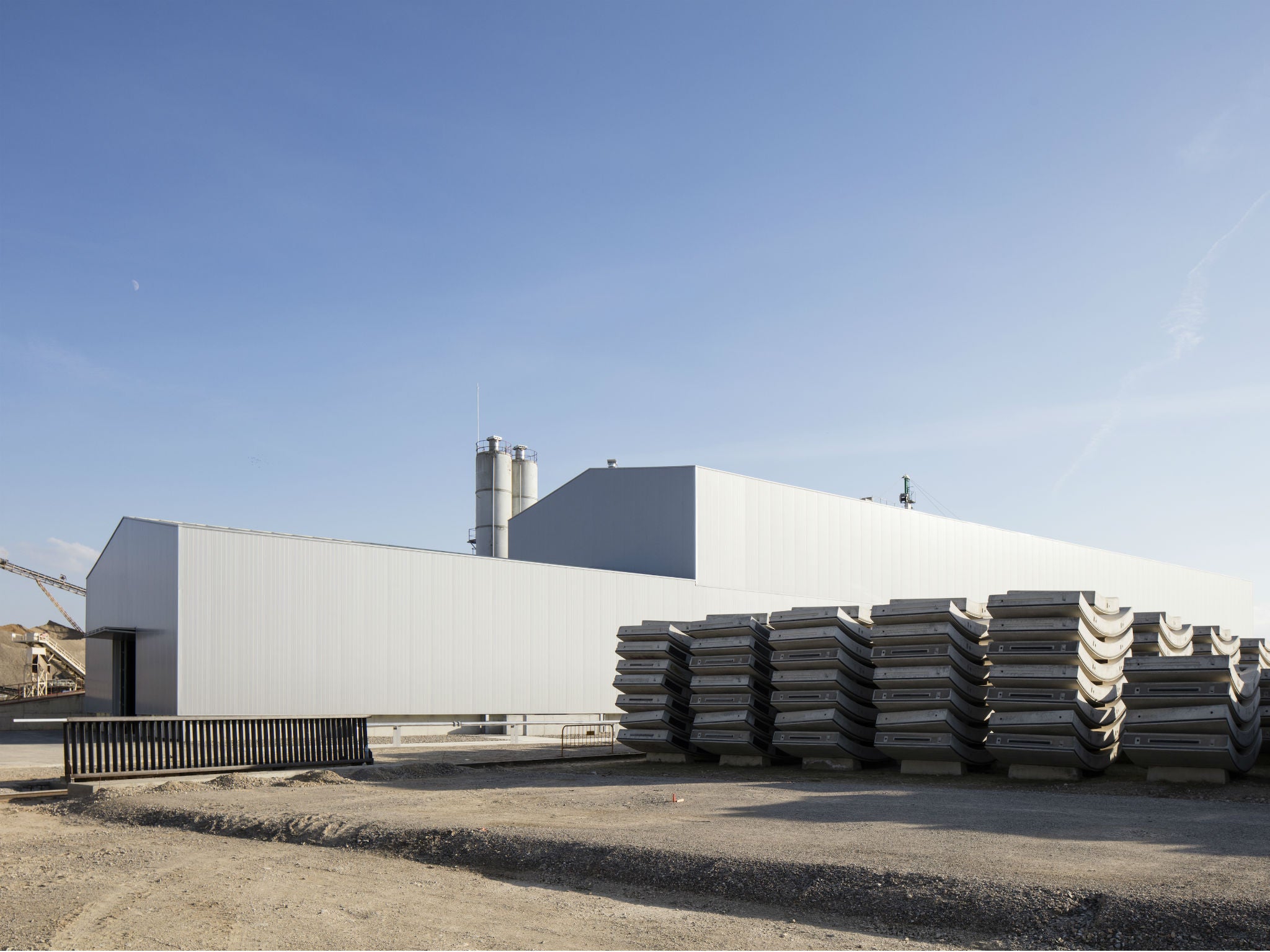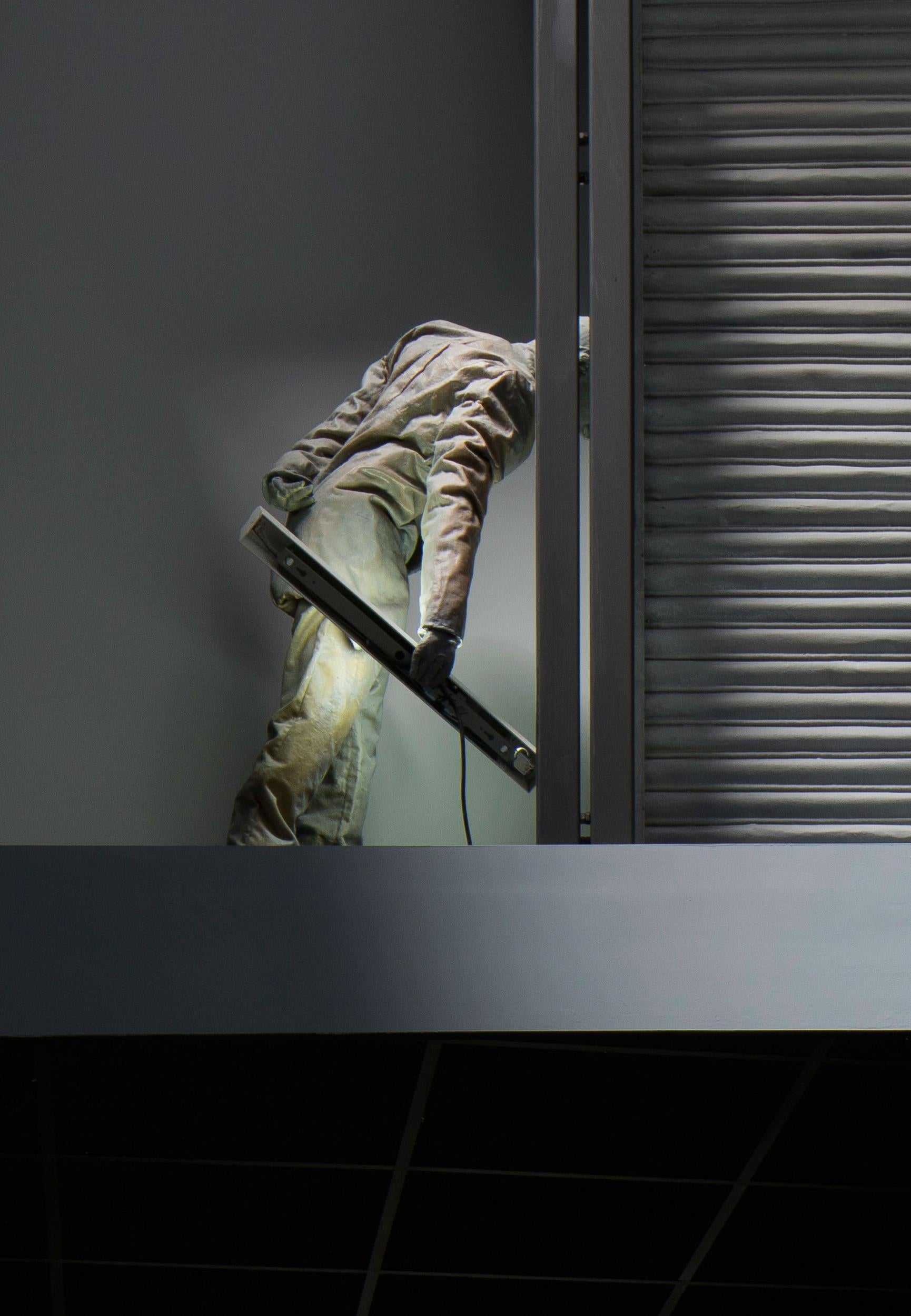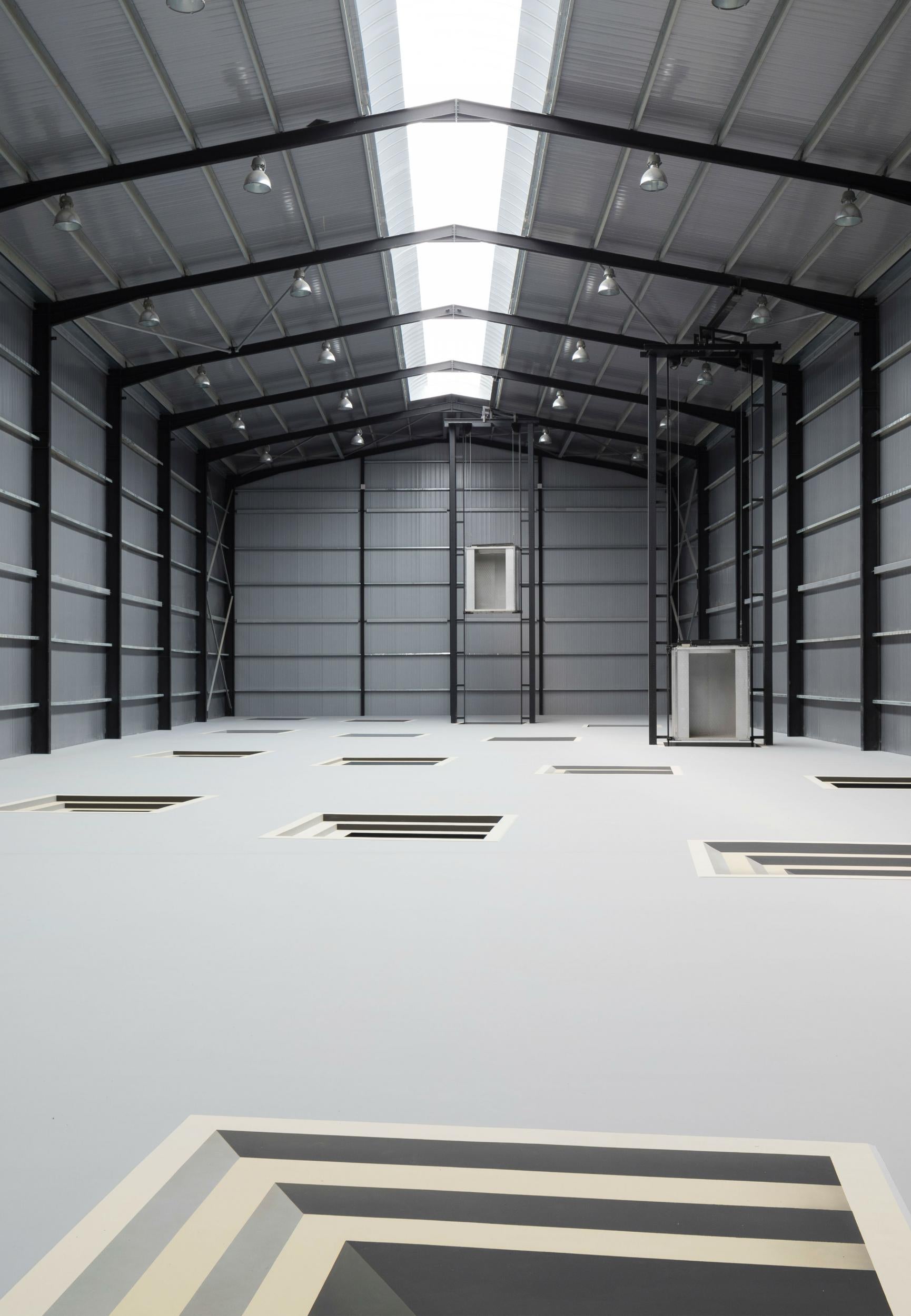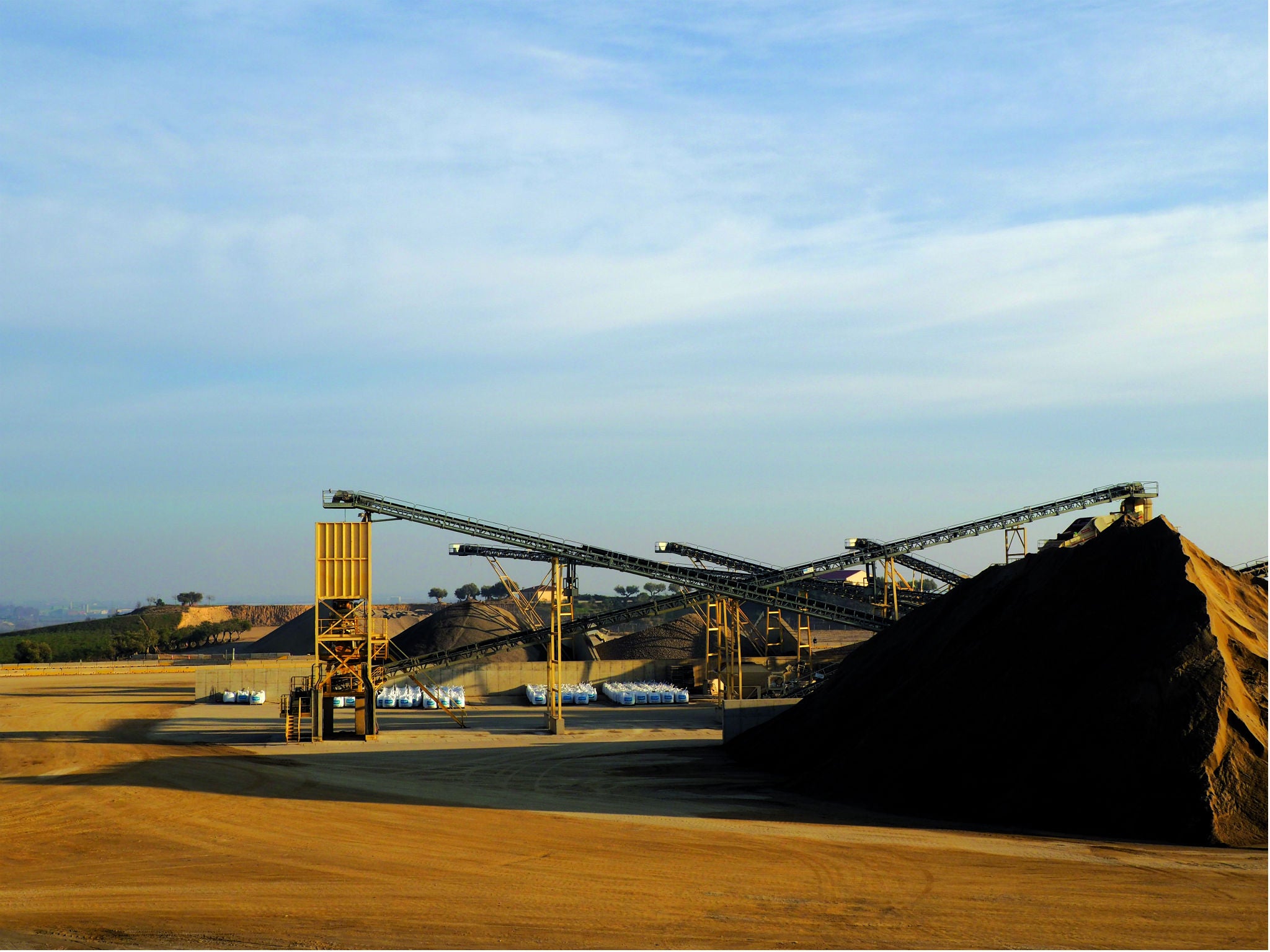Could this be the first new contemporary art destination for independent Catalonia?
In an industrial complex in Balaguer, a bold new contemporary art destination has opened its first major exhibition to the public – the late Juan Muñoz’s celebrated sculptural installation 'Double Bind'

Your support helps us to tell the story
From reproductive rights to climate change to Big Tech, The Independent is on the ground when the story is developing. Whether it's investigating the financials of Elon Musk's pro-Trump PAC or producing our latest documentary, 'The A Word', which shines a light on the American women fighting for reproductive rights, we know how important it is to parse out the facts from the messaging.
At such a critical moment in US history, we need reporters on the ground. Your donation allows us to keep sending journalists to speak to both sides of the story.
The Independent is trusted by Americans across the entire political spectrum. And unlike many other quality news outlets, we choose not to lock Americans out of our reporting and analysis with paywalls. We believe quality journalism should be available to everyone, paid for by those who can afford it.
Your support makes all the difference.A new and extraordinary contemporary art destination was recently announced at a press conference in Catalonia. It is situated at Balaguer, within a couple of hours drive from Barcelona, and its first major exhibit is just opening to the public. Much has happened in the days in between. The atmosphere at the international press conference on 19 October was warm but slightly fractious, due largely to the probing of the Spanish press contingent and the stormy weather outside. Would this be a first new contemporary art destination for independent Catalonia? What would the Madrid-born sculptor, Juan Muñoz – who died in 2001, and whose great sculptural installation Double Bind forms the opening exhibit – have made of it? Since then, of course, Catalonia has declared itself an independent state, the Spain Constitutional Court has cancelled its declaration of independence, resulting in civil unrest, rebellion charges and now the jailing of eight Catalan ministers.
The new destination is at the hear of the monumental industrial complex of the Sorigué company near Lieida, where trucks scurry to and fro ferrying asphalts and aggregates, and pyramids of sand and stone stand witness to the ground that has been scooped out at their feet. The introduction of art to the site – and the building or repurposing of industrial and agricultural structures specifically to house it– is part of the ‘Planta’ project, sponsored by Sorigué and the Sorigué Foundation. ‘Planta’ will also see the completion of a new architect-designed contemporary art museum, opening in two years time. The Sorigué Foundation has been building one of the finest contemporary art collections in Spain (including works by the likes of Anselm Kiefer, William Kentridge and Bill Viola), and this, together with site-specific large-scale works like the Muñoz, will be at the heart of the completed project and active working site.
Juan Muñoz’s iconic sculptural installation Double Bind (2001) – the first ever real commission for Tate Modern’s Turbine Hall, and perhaps its finest of all – now finds itself in a bizarre new home after 16 years. 'Double Bind' is a vast and eerie immersive sculptural installation, divided into two floors, with animated figures and scenes revealed in mysterious shafts in the ceiling of the darkened lower storey, as one wanders through it – but hidden when viewed from the brightly lit storey above. Speaking at the press conference, James Lingwood, the original curator (with Susan May) of the remarkable Tate exhibit, said that he felt like ‘Rip Van Winkle’: asleep for 16 years, only to awaken to find himself in a place that is ‘a world of its own, every bit as strange and complete as the world I experienced in the Turbine Hall’.

The repurposed industrial structure, which houses Double Bind, is the first part of the project to open to the public. Astonishingly, over the space of a year (shown in time-lapse photography in an excellent adjacent documentation centre), the site engineers have virtually reconstructed the Turbine Hall, complete with ramp and bridge, covering an area of 2,000 square metres. One literally has to rub one’s eyes to believe that this is not a desert mirage. Outside, amid piles of gravel and sand, monumental concrete structures destined for Barcelona’s subway tunnels stretch into the distance. Elsewhere, groves of olive and almond trees, which have been planted to replenish the former agricultural environment, complete the singular landscape.

Juan Muñoz’s piece is just as potent, intimate and superbly strange as it was in London, with its smaller than life-size tragi-comic figures (practically all modelled on his brother) inhabiting shafts that have been formed in the floor above, transporting us to miniature urban worlds that exist in the spaces between floors. A couple of small solitary lifts that cannot be entered, rise through an upper level that cannot be traversed. As you walk down the ramp you are plunged into the darkness of the lower garage-like space, while the illuminated shafts above encourage you to explore ever deeper, searching for familiar faces in a crowd. Among these faces is that of Muñoz himself, hidden in a secret shaft of its own.

Double Bind was Muñoz’s last work: he died suddenly at the age of 48. For his wife, the sculptor Cristina Iglesias, Double Bind is ‘a masterpiece of the 21st century’, which needs to find a permanent home, but at the same time ‘be something apart’. It will stay at the Sorigué complex for five years, in this superb installation supervised by his daughter, and will help put this new Catalonian art destination on the map. Great art works have the power to resonate in any context. Now Spain, too, is caught in a ‘double bind’ of its own, poised between two distressingly conflicting realities.
Double Bind, La Plana del Corbe industrial complex, Balaguer (Lleida, Spain) opens to the public and to group visits in November. Bookings must be made in advance via fundaciosorigue.com/en/visita
Join our commenting forum
Join thought-provoking conversations, follow other Independent readers and see their replies
Comments